Hair Care: Essential Tips for Healthy and Beautiful Hair
Maintaining the health of your hair can feel like a full-time job, but it's crucial for achieving those stunning hairstyles you adore. From daily habits to professional advice, let's explore the essential tips you need for healthy and beautiful hair.
Understand Your Hair Type
Not all hair is created equal, and understanding your hair type is the first step in establishing a proper hair care routine. Whether your hair is straight, wavy, curly, or kinky, each type requires different care techniques.
- Straight Hair: Typically, straight hair tends to be oily since natural oils can travel down the hair shaft more easily.
- Wavy Hair: Can get frizzy and lacks definition.
- Curly Hair: Needs ample hydration to maintain its curl pattern and prevent dryness.
- Kinky Hair: Very fragile and requires special care to maintain moisture and prevent breakage.
Identifying your hair type helps you choose the right products and practices to keep your hair healthy.
Proper Washing Techniques
Washing your hair might seem straightforward, but there's more to it than just lathering and rinsing.
- Frequency: Avoid washing your hair every day, as it strips natural oils necessary for scalp health. Aim for 2-3 times a week.
- Products: Invest in a high-quality shampoo and conditioner suited for your hair type. Avoid products with harmful chemicals like sulfates and parabens.
- Water Temperature: Use lukewarm water to open the hair cuticle for cleansing and sealing moisture. Hot water can strip your scalp of natural oils, causing dryness and irritation.
Moisturize and Condition
Conditioning your hair is just as important as washing it. It replenishes moisture and eases detangling.
- Conditioning: Always follow your shampoo with a conditioner suitable for your hair type. Apply from mid-length to ends, avoiding the scalp.
- Deep Conditioning: Treat your hair to a deep conditioning mask at least once a week. This step is vital for maintaining elasticity and softness.
- Leave-in Conditioners: These are particularly useful for curly and kinky hair that needs constant hydration.
Minimize Heat Damage
Heat styling tools are excellent for achieving specific looks, but they can be particularly damaging if not used correctly.
- Heat Protectant: Always apply a heat protectant spray before using any heat styling tools.
- Temperature Control: Use medium to low heat settings to minimize damage. High temperatures can lead to breakage and split ends.
- Air Drying: Whenever possible, opt for air drying your hair instead of using a blow dryer.
Regular Trims
Even if you're growing your hair, regular trims are essential for maintaining its health.
- Split Ends: Trimming helps remove split ends, which can travel up the hair shaft if not addressed.
- Healthy Growth: Regular trims promote healthier and faster hair growth by eliminating damaged sections.
Balanced Diet
What you eat has a direct impact on your hair's health.
- Proteins: Hair is primarily composed of keratin, a type of protein. Ensure your diet includes ample protein from sources like fish, eggs, and legumes.
- Vitamins and Minerals: Incorporate vitamins like A, C, and E, and minerals such as iron and zinc, to nourish your hair from the inside out.
- Hydration: Drink plenty of water to keep your hair hydrated and prevent dryness and brittleness.
Scalp Care
A healthy scalp is the foundation for healthy hair.
- Scalp Massages: Regular scalp massages improve blood circulation, which stimulates hair growth.
- Exfoliation: Exfoliating the scalp helps remove dead skin cells and product buildup that can clog hair follicles.
- Avoid Tight Hairstyles: Hairstyles that pull on your hairline can lead to traction alopecia over time.
Use Quality Hair Tools
Investing in professional-grade tools can make a significant difference in the health of your hair.
- Brushes and Combs: Use brushes and combs with natural bristles for detangling and styling to reduce damage.
- Hair Dryers: Choose a hair dryer with ionic technology to minimize frizz and enhance shine.
- Styling Tools: Opt for ceramic or tourmaline straighteners and curlers to ensure even heat distribution and reduce the risk of hair damage.
Protective Hairstyles
Protective hairstyles can help manage hair and reduce the risk of damage.
- Braids, Twists, and Buns: These styles can help protect the ends of your hair and reduce breakage.
- Silk Hair Wraps: Consider using silk hair wraps or pillowcases to minimize friction and prevent tangles while you sleep.
Incorporating these hair care tips into your daily routine can make a significant difference in the health and appearance of your hair. Whether you're using professional-grade straighteners, curlers, or natural techniques, the key lies in consistent and proper care. Embrace these practices to achieve the stunning, healthy hair you desire.





